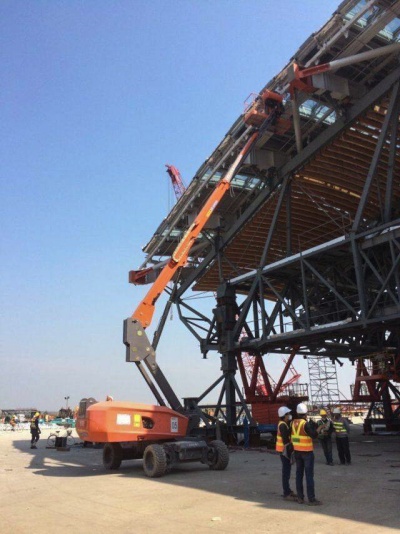joystick controller are essential components in machinery and equipment, serving as direct interaction points between operators and machines. These levers offer precise control over various functions, from simple on/off operations to complex multi-axis movements. One of the primary ways to categorize joystick controller is by their number of axes, which determines their functionality and application.

Single-Axis Levers: The Simplest Form of Control
Single-axis levers are the most straightforward type, operating along a single plane of movement. These levers are commonly found in applications where linear motion control is required, such as in manual valves, switches, or simple machinery controls. Their simplicity makes them both cost-effective and easy to integrate into existing systems.
Despite their limited movement, single-axis levers can provide precise adjustments. For instance, in hydraulic or pneumatic systems, these levers allow operators to control fluid flow or pressure with minimal effort. Their compact design also ensures they fit seamlessly into confined spaces, making them popular in applications where space is at a premium.
Dual-Axis Levers: Versatility in Movement
Dual-axis levers expand on the functionality of their single-axis counterparts by offering two degrees of freedom. This allows operators to control two independent functions simultaneously or to manage a single function along two axes. Examples include certain types of steering wheels, joystick controls, or robotic arm interfaces.
The added axis enables more complex movements, such as forward/backward and side-to-side motions. In industrial machinery, this type of lever is often used in applications requiring simultaneous control of speed and direction, such as in CNC machines or automated assembly lines. Its versatility makes it a preferred choice for scenarios where dual-directional control is essential.
Three-Axis Levers: Advanced Control for Complex Machinery
Three-axis levers introduce an additional degree of freedom, enabling control along three independent planes of movement. This type of lever is commonly found in advanced machinery, such as 3D printers, heavy-duty cranes, or robotic systems. The three axes allow operators to control height, depth, and width simultaneously, providing fine-tuned adjustments for complex operations.
In robotics, three-axis levers are often used to manipulate robotic arms for precise tasks like welding, painting, or assembly. Their ability to manage multiple variables simultaneously makes them indispensable in industries requiring high levels of accuracy and control. While more complex to design and manufacture, three-axis levers offer unparalleled functionality for demanding applications.
Multi-Axis Levers: Customization for Specific Needs
Beyond three axes, some joystick controller are designed with even more degrees of freedom. These multi-axis levers are highly customizable, tailored to meet the specific needs of particular machinery or systems. They are often found in applications requiring intricate and simultaneous control of multiple variables, such as in aerospace engineering or advanced medical equipment.
Multi-axis levers can include additional axes for rotation, tilt, or even advanced motion sensing. In specialized machinery, these levers allow operators to interact with the machine in a more intuitive and efficient manner. While requiring more sophisticated engineering, their ability to adapt to unique control requirements makes them a valuable asset in niche applications.
In conclusion, joystick controller come in various forms, each tailored to specific needs in industry and machinery. Whether it’s the simplicity of a single-axis lever or the complexity of a multi-axis design, these components play a crucial role in ensuring efficient and accurate operation. Understanding the different types and their applications can help businesses select the most appropriate levers for their operations, ultimately enhancing productivity and safety in the workplace.